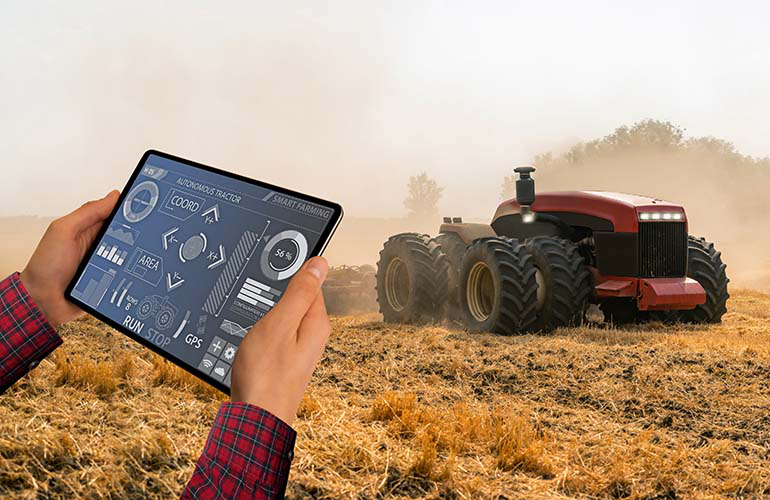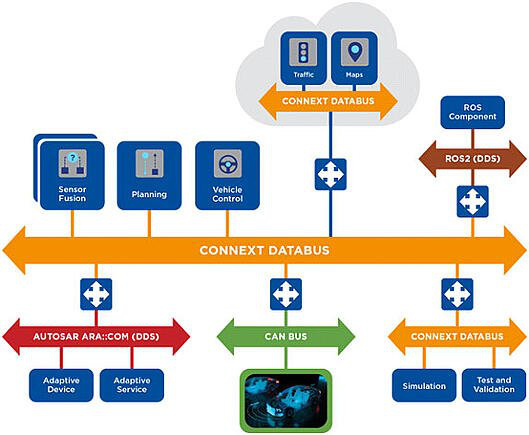Author: Truck Technology Frontline
Introduction

Reliable connectivity is essential for the new generation of cars to achieve a higher level of autonomous driving. Cars are becoming networks of interconnected computers — some with powerful CPUs, while others are low-end microcontrollers that participate in processing data, making decisions, and/or competing for resources. As the number of connections increases with image and lidar processing, sensor fusion, driving control, and remote operation, system complexity also increases. As vehicle architectures and related processing requirements evolve, both service-oriented new ADAS and autonomous driving functions with critical time constraints require secure, fast connectivity software solutions, while also considering scalability.
The technology needed to address this growing problem must be able to share data in real time and process large amounts of data with different priorities, sources, and destinations, creating a more reliable and robust solution. Building software in safety-critical environments poses a series of challenging requirements for traditional and non-traditional car competitors, and not all software solutions are capable of handling this task.
Four connection solutions currently available are:
The first option is to use cloud and enterprise technology developed for large-scale systems, which will be suitable for solutions such as remote operations.
The second option is to build a solution from scratch.
The third approach is to select a new automotive platform such as AUTOSAR Adaptive, ROS 2, Apollo, etc., and build systems around them.
The fourth option is to use proven foundational technologies based on standards for critical technologies. Data Distribution Service™ (DDS) is at the core of several automotive platforms mentioned above. DDS has been used for critical mission projects in various markets such as aerospace, defense, and healthcare for several decades.
This standardized connectivity solution provides:
- Real-time performance
- Fine-grained data control, including real-time publisher-side filtering
- Quality of service (QoS), covering reliability, persistence, deadline, and liveness
- Universal wire representation using Real-Time Publish-Subscribe (RTPS) for security, versatility, and interoperability among suppliers
RTI (Real-Time Innovations) is the world’s largest provider of intelligent machine and augmented reality system connectivity software frameworks. Its world-leading Connext technology products provide real-time data sharing software frameworks, whose reliability, security, and scalability have been proven in the most demanding industrial systems.
As the only standard-based solution, RTI Connext Drive is a software framework based on the open data distribution service (DDS) standard. It is a vehicle-level interconnect solution for autonomous driving cars and a verified software framework that meets the industry’s rigorous safety, security, and performance requirements. It supports the entire process from R&D to mass production of autonomous vehicles. As an advantage of the RTI Connext Drive solution as a framework, it is a useful complement to mature standards such as AUTOSAR, and it also promotes the development of powerful automobile interconnection systems.
XPeng Motors is the first Chinese company to apply Connext DDS technology products to autonomous driving assisted vehicles. Aptiv Corporation uses the RTI Connext® DDS middleware for secure in-vehicle communication for autonomous driving vehicles as an internal safety data transmission tool. In July 2020, RTI announced its participation in the Baidu Apollo autonomous driving partner ecosystem. In January 2021, NXP and RTI jointly promoted the development of autonomous driving cars.
On May 11, 2021, Real-Time Innovations (RTI) released the latest version of its software framework, RTI-Connext 6.1, aimed at solving the development and deployment challenges faced by companies building remote operation and real-time automatic systems.
Automatic systems must operate in inaccessible, remote, or hazardous environments. Examples of automatic systems include underwater drones, remote medical equipment, space systems, and building and mining robots. For many such systems, AI’s ability to deal with machines’ performance under many different types of operating conditions is limited. Therefore, if the robot gets stuck, sometimes a remote operator is needed to intervene, start, or resume operations.

Ensuring the connectivity of a distributed control system for an automatic system is challenging. In many cases, robots work in environments that are unsuitable for human habitation, and the connections in these environments are often unreliable and low-bandwidth. Depending on the environment, operators may not be able to approach the equipment. This affects communication and connection speed between operators and robots. Communication ranges can include LAN, WAN, public and private networks.“`markdown
Connext 6.1 introduces a set of features for easy real-time remote operations on any network. For instance, if the network connection changes as the system moves, the connection is seamless without needing to reconnect, secure without needing to renegotiate, and reliable without losing information. As a result, remote operations can continue uninterrupted in real time. Connext 6.1 supports and optimizes fast communication in highly variable LAN and WAN environments. Furthermore, Connext 6.1 does not require software changes to support different network types. Its application programming interface (API) abstracts the underlying network, allowing developers to target any environment. Connext 6.1 offers the first practical design for remote automatic system control.
Connecting Geographically Distributed Systems
Connext 6.1 introduces new features that simplify the development and deployment of geographically distributed systems, including:
-
Real-time WAN transmission provides reliable, low-latency, and secure communication over lossy, low-bandwidth, and public networks. It supports network address translation (NAT) traversal and mobile applications through constantly changing Internet addresses.
-
Cloud discovery services simplify the deployment of dynamic systems, where applications, assets, and their network addresses may be unknown at configuration time. It provides a way for applications to discover each other and communicate directly peer-to-peer, minimizing latency and maximizing throughput. It is far superior to traditional centralized broker solutions.
-
Built-in data compression improves the efficiency of bandwidth-constrained networks. Compression maximizes bandwidth utilization, reduces overhead and latency, and improves throughput. Compression algorithm and level selection enable optimization of processor and network utilization for different load types.
WAN transmission is one of the fastest and simplest ways to implement point-to-point UDP WAN communication, especially for projects already using RTI Connext DDS, but also applicable to projects using other middleware or starting from scratch. Mission Robotics was able to create a proof-of-concept by remotely controlling and monitoring a robot over the internet within three hours, which is a game-changer considering the time and resources traditionally required for such work.
“`# Robots are essential for exploration, specifically for complex tasks such as building and maintaining space infrastructure. Though automation is advancing rapidly, it is not enough on its own. These systems need to incorporate human and machine intelligence. This allows robots to act as an “incarnation” of humans: humans can handle direction and complex situations, but robots are smart enough to carry out the actual operations. This collaborative remote control is critical for all intelligent systems.
This is not an easy task. Guiding semi-automated systems over an unreliable network is incompatible with enterprise network technology. RTI Connext 6.1, in conjunction with new real-time wide area network transfers, optimizes speed and fixes lost data packets, enabling users to reliably control systems despite inherent delays. RTW will enable transport connections and other automated systems to function. It is the foundation for efficient, scalable, and secure remote operations.
Komatsu is developing a mining technology ecosystem supported by the RTI Connext DDS platform. Connext DDS enables data from all different types of machines, mining processes, systems, and third-party applications to be connected, while leveraging edge and cloud computing for interoperability, automation, and optimization. Real-time WAN transfers and cloud discovery services in Connext 6.1 help overcome technical barriers while simplifying software architecture.
Efficiently Developing Large-Scale Heterogeneous Systems
In addition to supporting complex networking environments, Connext 6.1’s new features can facilitate the development of any large-scale heterogeneous distributed system.
-
Support for .NET Core 5 allows developers to use C# and run applications on any platform that supports .NET Standard 2.0, including not only Windows but also Linux, macOS, and the Unity game engine.
-
A new System Designer tool provides a graphical way to define configurations and interfaces in Connext-based systems, making it convenient and intuitive. This helps ensure that applications follow common architecture and can be interoperable as plug-and-play.
-
The Administration Console includes enhanced graphical views to enable easier visualization of components and interconnectivity of real-time large-scale systems. This enables OEM vendors and system integrators to observe behavior during testing and deployment better and identify configuration or network problems more quickly.Self-driven innovation is accelerating at an unprecedented speed. Despite the increasing interconnectivity, intelligence, and mobility of systems, the challenges surrounding development and security remain very complex. The latest update of RTI’s Connext product provides fundamental software for remotely operating autonomous systems. In the field of intelligent connected vehicles, RTI products are used by leading manufacturers around the world to connect high-performance applications in connected and autonomous vehicles, resulting in faster time-to-market and lower development costs. Today, more than 50 companies are using its software to build and operate their autonomous driving projects. The new software framework will provide better support for the development of autonomous driving vehicles.
This article is a translation by ChatGPT of a Chinese report from 42HOW. If you have any questions about it, please email bd@42how.com.